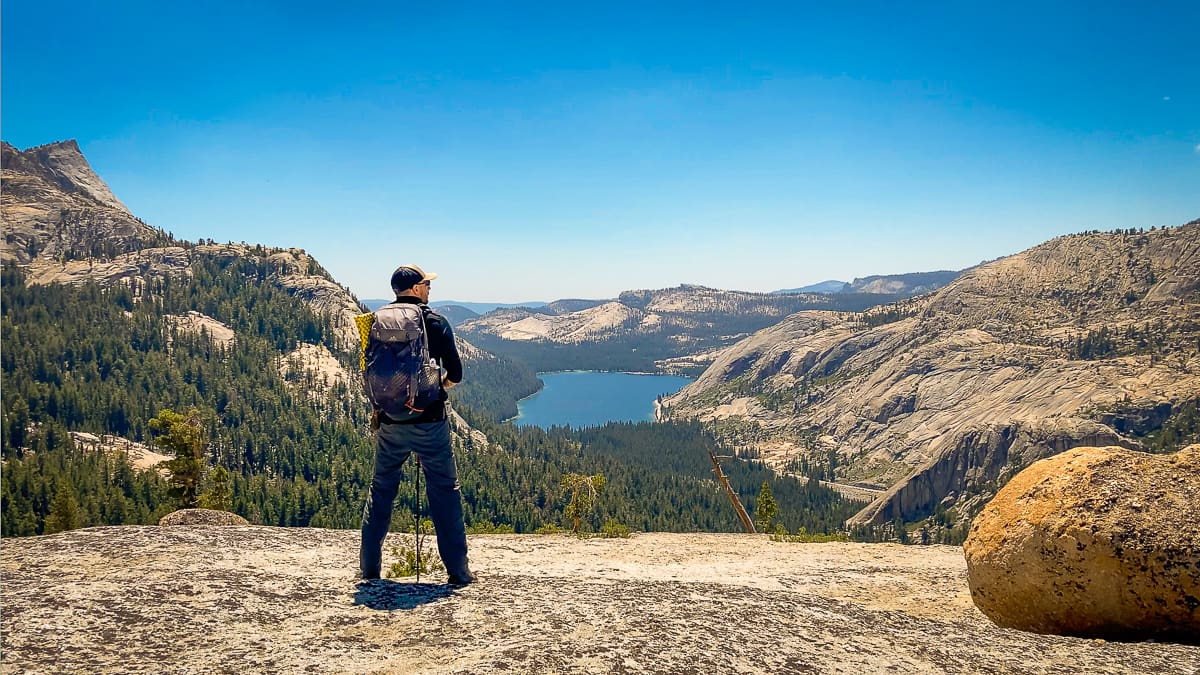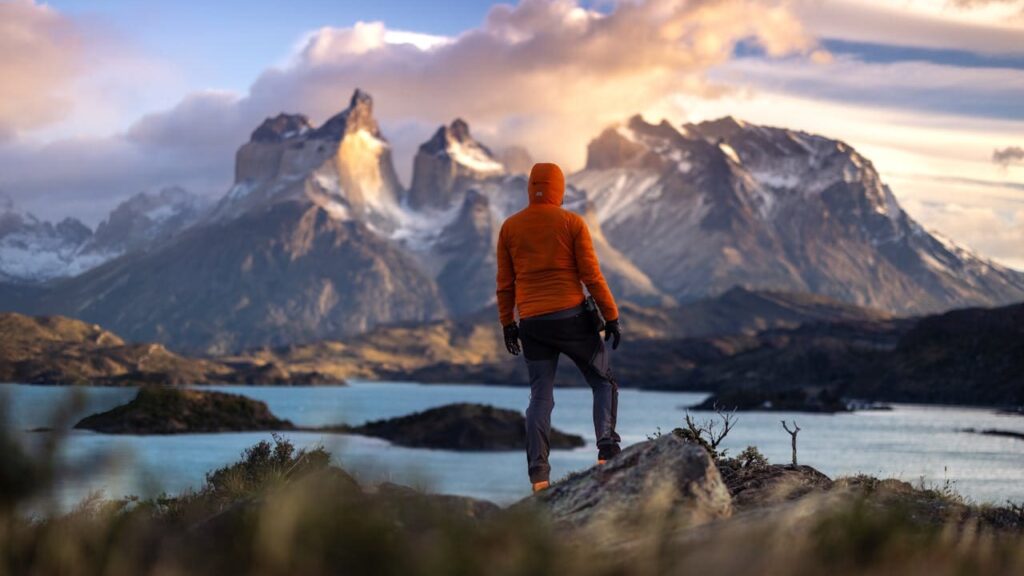Beginner Backpacking Gear Guide: Essential Gear for Your First Trip

Introduction to Backpacking Essentials
Picture this: your first backpacking trip—fresh air, breathtaking views, and the thrill of adventure. You’re filled with excitement, ready to explore the beauty of the great outdoors. But nothing ruins the experience faster than forgetting a crucial piece of gear or carrying too much weight. Even small mistakes, like the wrong socks or an ill-fitting backpack, can turn a dream trip into a frustrating ordeal.
For beginners, packing can feel overwhelming. What’s essential, and what’s just extra weight? This guide simplifies the process, focusing on must-have gear to help you prepare confidently. From the “Big Three”—shelter, sleep system, and backpack—to clothing, food, safety gear, and organization tips, you’ll learn how to pack smart and hike happy.
Ready to dive in? Let’s make your first backpacking trip unforgettable!
Disclosure: This post contains affiliate links. As an Amazon Associate, I earn from qualifying purchases. I only recommend products I use and trust.
Table of Contents
The Big Three: Shelter, Sleep System, and Backpack
Shelter
Your shelter is your home on the trail, protecting you from the elements and giving you a safe place to recharge. For beginners, a double-wall tent is a solid choice, as it’s easy to set up and prevents condensation. Solo tents weighing under four pounds are ideal for lightness, but if you’re traveling with a partner, a two-person tent can often be more efficient to share.

If you’re looking for a reliable, lightweight tent, the Big Agnes Copper Spur HV UL [on Amazon] is an excellent option known for its durability, easy setup, and spacious design.
If you’re open to alternative shelters, hammocks and tarps can be lighter and more versatile options. However, they require a bit more skill and are best suited for areas with appropriate conditions, like abundant trees for hammocks.
Want to see what I use for shelter? Check out my Standard Backpacking Gear List.
Sleep System
Getting a good night’s sleep is crucial for your energy and morale on the trail. A sleeping bag rated for the conditions you’ll face is key—20°F is a great all-around option for three-season trips. For a reliable choice, consider the Kelty Cosmic 20. It’s lightweight, packs down small, and uses 550FP compressible down to retain warmth.

For those who prefer quilts, the Enlightened Equipment Revelation Quilt is a versatile and ultralight alternative that’s perfect for backpackers who want to save weight without sacrificing comfort.
Pair your bag or quilt with a sleeping pad to insulate you from the cold ground. The Therm-a-Rest NeoAir X-Lite [on Amazon] is an excellent option, offering a balance of comfort, warmth, and packability. Inflatable pads like this one are lightweight and comfortable, while closed-cell foam pads are durable and budget-friendly. Adding a lightweight camp pillow can make a surprising difference for your sleep quality.
Backpack
Your backpack carries everything you need, so comfort and fit are non-negotiable. A 40–60L pack is ideal for multi-day trips, providing ample space without being overly bulky. Look for features such as adjustable straps, a padded hip belt, and a supportive frame that helps evenly distribute the weight. Ventilation is another key factor—many modern packs include breathable mesh back panels to keep you cool during long hikes.

Getting the right fit is essential to avoid discomfort or injury on the trail. Start by measuring your torso length and hip circumference, as these are critical for ensuring the pack sits properly on your body. If you’re unsure about sizing, most outdoor retailers offer free pack-fitting services where experts can help adjust the straps and find a pack that feels balanced and secure.
Investing in a high-quality pack is worth every penny. If you’re looking for a reliable option, check out the Osprey Atmos 50 [on Amazon] that meets all the criteria for comfort, durability, and functionality.
Remember, a poorly fitting pack can turn an enjoyable trip into a miserable experience, so take the time to find one that suits your body and your needs perfectly.
Clothing Essentials: Dress for Success

Versatile Layers
Packing the right clothing ensures comfort in a variety of conditions. Avoid cotton, which absorbs moisture and dries slowly, leaving you cold and uncomfortable. Instead, opt for merino wool or synthetic fabrics, which wick sweat and dry quickly.
Layering is key: start with a breathable base layer, followed by an insulating mid-layer like fleece or down for warmth. Finish with a waterproof rain jacket to protect you from rain and wind. For particularly wet conditions, consider rain pants or a rain kilt as a lightweight alternative.
Pack clean, dry clothes to wear at camp, including warm socks, which can significantly improve your recovery after a long day of hiking.
Cold Weather Essentials
Even in warmer seasons, temperatures can drop significantly at night. Be sure to pack a warm hat (like a beanie), gloves, and thicker socks for colder evenings. These lightweight items take up little space in your pack but are invaluable for staying warm and comfortable.
Footwear and Accessories

Choose your footwear based on the terrain and your personal preference. Boots provide more ankle support, while trail runners are lighter and dry faster. Whatever you choose, pair them with wool or synthetic socks to reduce the risk of blisters.
Accessories like a buff and hat are versatile tools for sun protection and insulation. Don’t forget sunscreen, SPF lip balm, and lightweight gaiters to keep debris out of your shoes.
Navigation Tools: Know Your Route
No matter how well-marked a trail might seem, reliable navigation tools are essential for staying on course. A printed map and compass are lightweight, never run out of battery, and are invaluable when paired with navigation skills.

For added security, consider using a GPS device or a smartphone app like Gaia GPS. Just remember to download maps for offline use before heading out. These tools are backups, not replacements, for traditional navigation methods.
First Aid Kit: Be Prepared for the Unexpected

A well-stocked first aid kit is critical for handling trail injuries, blisters, or illness. Your kit should include:
- Adhesive bandages in various sizes
- Antiseptic wipes or ointment
- Blister treatment (e.g., moleskin)
- Pain relievers like ibuprofen
- Tweezers for splinters or ticks
- Medical tape and gauze for larger injuries
Customize your kit based on the length of your trip and specific needs. Don’t forget to include personal medications and a laminated card with emergency contact info.
Food and Cooking Essentials: Fuel Your Adventure
Meal Planning
Backpacking meals should be lightweight, calorie-dense, and easy to prepare. Dehydrated and freeze-dried meals are beginner-friendly options that only require boiling water. Brands like Mountain House or Packet Gourmet offer a wide range of flavors, but making your own meals with a dehydrator is a cost-effective alternative.
For snacks, think portable and nutrient-rich: trail mix, jerky, energy bars, and dried fruit are all excellent options. Aim for a mix of carbs, protein, and fats to keep your energy steady throughout the day.
Cooking Gear

You don’t need a full kitchen setup—just a lightweight stove, fuel canister, pot, and spork will do. A long-handled spork is especially handy for eating out of freeze-dried pouches without making a mess.
In bear country, store your food in a bear canister or hang it from a tree to keep wildlife safe and your food secure.
Staying Hydrated
Water is critical. Carry a reliable water filter, like the Sawyer Squeeze, to purify water from streams or lakes. Pair this with collapsible water containers or bottles for convenience. Don’t forget electrolyte drink mixes to stay hydrated, especially during hot or strenuous hikes.
Fire-Starting Tools: Stay Warm and Safe
Being able to start a fire is critical for warmth, cooking, and emergencies. Pack multiple fire-starting tools, including:
- Waterproof matches
- A lighter
- Firestarter materials like cotton balls dipped in petroleum jelly
Practicing your fire-starting skills before your trip can help you feel more confident when it counts.
Toiletries and Sanitation Gear: Leave No Trace
Proper hygiene on the trail isn’t just about comfort—it’s also about preserving the environment. Essential items include:
- A trowel for digging catholes when nature calls
- Biodegradable soap for cleaning dishes or yourself
- Hand sanitizer to maintain cleanliness before meals
- A quick-dry microfiber towel for added versatility
Always follow Leave No Trace principles to minimize your impact on the trail.
Personal Comfort and Extras: Elevating Your Backpacking Experience
Trail Comfort: Stay Supported and Balanced
Trekking poles are a backpacker’s best friend. They provide stability on uneven terrain, reduce strain on your knees, and improve balance when carrying a heavier pack. Adjustable, collapsible poles are lightweight and easy to stow when not in use—perfect for both trail and camp use.

Camp Comfort: Relax and Recover
After a long day of hiking, these items can make camp life more enjoyable:
- Camp shoes: Lightweight options like Crocs or water sandals let your feet recover while keeping your hiking shoes clean and dry.
- Camp chairs or sit pads: Whether you choose a lightweight chair or a foam pad, having a comfortable seat makes meals and campfires more relaxing.
Personal Luxuries: Small Items, Big Impact
Adding a few small extras can elevate your experience:
- String lights or lanterns: Create ambiance and improve visibility at camp.
- Treats: Bring indulgences like chocolate or coffee to boost morale during tough stretches.
Packing Tips for Beginners: Stay Organized

Efficient packing keeps your gear accessible and your pack balanced. Place heavier items, like food and shelter, close to your back for better stability. Lighter items, like your sleeping bag, should go at the bottom. Keep quick-access essentials like snacks, rain gear, and sunscreen in outer pockets or at the top of your pack.
Conclusion
Planning your first backpacking trip doesn’t have to be overwhelming. By focusing on the essentials—your shelter, sleep system, and backpack—and adding the right clothing, food, and safety gear, you’ll set yourself up for success.For even more guidance, download our free Backpacking Gear Checklist.

If this guide helped you, share it with a fellow adventurer and explore our blog for more tips and gear reviews. Happy trails!
Join Our Community of Adventure Seekers!
Get the latest backpacking tips, gear guides, and trail inspiration sent directly to your inbox.
Sign up to start exploring!
Amazon and the Amazon logo are trademarks of Amazon.com, Inc. or its affiliates.

